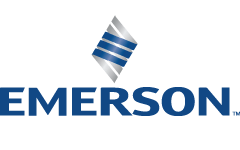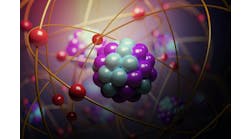When Coriolis flow measurement technology first debuted back in the 1970s, food and beverage companies were among the earliest adopters. To learn more how Emerson’s Coriolis pioneers continue to tailor their portfolio to align with the needs of today’s F&B makers, Keith Larson speaks with Melissa Stiegler, director, food & beverage industry for Emerson.
Transcript
Keith Larson: When Coriolis flow measurement technology first debuted back in the 1970s, food and beverage companies were among the earliest adopters. And since that time, those same Coriolis innovators that brought the first Coriolis meters to market have continued to develop and introduce new capabilities that resonate with the very latest needs and priorities of food and beverage (F&B).
Hello, my name is Keith Larson, editor in Control magazine and ControlGlobal.com, and you're listening to a special Solution Spotlight edition of our Control Amplified podcast, sponsored this week by Emerson. To learn more about how Emerson's Coriolis pioneers continue to tailor their portfolio to align with the needs of today's F&B makers. I'm pleased to be joined today by Melissa Stiegler, director of food and beverage industry for Emerson.
Welcome, Allison, a real pleasure to talk with you today.
Melissa Stiegler: Thanks, Keith. It's great to be here. You know, I'm excited to talk about our Coriolis transmitters, and of course, my favorite industry, food and beverage.
Larson: Sounds great. Sounds great. And I think we've got a little bit about, a new product as well, so I think we can get to that as well. But to start things off, maybe you can talk a little bit more about the advantages that the earliest Coriolis meters offered and why the technology really resonated with food and beverage makers right out of the gate.
Stiegler: Yeah, when our Coriolis meter first hit the market way back in 1977, literally decades ago, its biggest advantage was helping customers with its mass measurement output, which was ideal to maintain mass balance. Obviously, things have changed since then. Now, we have double tubes, higher accuracy, density as a second output, different surface finishes and our two for hygienic applications. You name it, we have innovated it.
Larson: Absolutely. While successive generations of the sensors have certainly become more stable and even more accurate than they were to start, many of the portfolio innovations have had to do with really associated software and analytics capabilities. Can you explain some of the those innovations and their relevance to the food and beverage sector?
Stiegler: Of course, I think that we've talked about this a lot over the years. But at the end of the day, if a customer has data but doesn't know how to use it, it doesn't help them very much. A lot of our innovations have worked on just that. So, the most obvious one would be concentration measurement that uses density and temperature to assess the concentration of the solution. If you think about a customer who is blending a beverage, they probably are using a syrup in there. If you miss the target and put in too much or too little syrup, it affects your end product. They can instead use a concentration measurement to know exactly what's going on to adjust their blend rates on the fly. As you can imagine, the cost of concentrates, sugar, sweeteners and other ingredients are pretty high. So, overshooting specifications will really cost them a lot. Concentration measurement has been a big hit with our food and beverage customers who are looking to maintain quality of a product throughout a process.
The other big hit has been advanced phase measurement, which, in technical terms, helps with two-phase flow remediation. What this means for our customers is that they can get much more accurate measurement and applications with entrained gas or liquid. Something like cream, for example, which can be very foamy can be tough to measure reliably. Advanced phase measurement adapts to changing process conditions by using a proprietary algorithm to determine when there's entrained gas in the process. When gas is present, the smart solution automatically corrects mass and volume flow measurements based on previously measured gas-free values. We've had customers use it with ice cream, dog food and potato chip production. You name it, we've done it.
And then another innovation highlight would be launching our smart meter verification in 2011. This is a stoplight type of check for your meter it provides in process verification of flow meter health, giving customers confidence in their measurement. They can run these checks on demand or schedule them to run consistently and identify trends with their meters to help them stay proactive on maintenance and maximize production runs. These tests can be done remotely as well, especially with our Ethernet transmitters, such as the 1600 or 5700, which include their own monitoring webpage.
What's really important here is that we spend a lot of time and energy innovating new solutions to help meet the needs of food and beverage customers. I would also add that technology leadership is much more than a portfolio of products. It's working with customers to resolve process issues that may not be a meter problem, but the process is causing a measurement problem. That's what you get when you work with us, and it's one of my favorite things to do is to help customers solve their problems.
Larson: Well, great. Well, the COVID-19 pandemic was a wake up call for all sorts of manufacturing companies, food and beverage companies, in particular, couldn't afford to miss a beat. I think there was probably more packaged foods being sold because people weren't going out to eat in restaurants and manufacturers really couldn't afford downtime. Can the type of flow meter that companies buy play a role in boosting productivity and avoiding unnecessary downtime?
Stiegler: Yeah, the pandemic was really a wake up call for all of us, wasn't it? It definitely impacted the food and beverage industry, and it changed the way that consumers consume things. For example, if you would regularly have a happy hour friends, that stopped and you had a drink at home maybe over Zoom or something. And while that change seems really small in my mind, it actually impacted how food and beverage producers sell their products. It's different for them to make cans of beer than kegs of beer and the cost change for them as well with shipping and all sorts of things. So, this industry was affected. And luckily, we also have to eat and drink. And these producers were able to adjust to the trends quickly and really change how they do business to be successful.
But to get to your question, how to flow meters help with this? All the software and analytical capabilities I mentioned are specially designed to maintain quality of a customer's product and maximize production. What we're hearing from our customers is how they're needing to adjust quickly to massive increases in production, changes in recipes, changes in processing conditions, all while dealing with staffing shortages. This is where accurate mass measurement, consistent recipe quality and proactive maintenance becomes a key part of adjusting to evolving consumer habits while boosting and maintaining the high productivity it demands.
Larson: Great. Yeah, certainly, Coriolis has the highest rangeability from from low to high and maintaining that accuracy, which I imagine for food makers would be incredibly important.
Stiegler: Yeah, absolutely.
Larson: Now traditionally, Coriolis meters have not been two-wire instruments, as we think of, you know little 4-20 mA sort of instruments. And they require, really, separate wiring for power and for communications. But now the new 1600 transmitter is one that includes the option of Power over Ethernet, or PoE, which really avoids the need for that extra set of wires. What sort of impact does that have on installation effort and expense? I would imagine you've tried to quantify that in your application notes and such.
Stiegler: Right, so the most obvious benefit is being able to bring both data and power over one cable, one Ethernet cable, which would plug right into the 1600 Ethernet cord. With no wiring termination required, it's really plug and play. This would save the customer time, expense and complexity from having to install power cabling. There are however, other benefits that may not be as obvious such as flexibility and scalability of Power over Ethernet.
Basically, for it to work, the 1600 would need to connect to a network switch, which has PoE capability. If a customer doesn't have an Ethernet network laid out and they know they want PoE, they can make sure from the get go that it's purely capable. But for customers who already have an Ethernet network, they can actually easily retrofit it with what's called an injector, the customer can decide where and when to retrofit their network switches. One of our field trial customers did exactly that, and they loved it. It saved them hours on installation effort while also being very cost effective.
Larson: Are there other features of the 1600 that make it more tailor fit for food and beverage applications?
Stiegler: Yeah, so again, the most obvious thing externally is that it's really lightweight and compact, which is important in food and beverage applications. We're offering the 1600 both in aluminum and stainless steel with polycarbonate cover, which has been tested to withstand even the most rigorous clean-in-place processes. It will also include our batching software as an option for customers who want to use their Coriolis transmitter as a batch controller. Additionally, it includes Ethernet, which has been a growing trend within the food and beverage industry, and allows for easy integration and remote monitoring or configuration to avoid constant walk outs to the assets. We've heard from a customer who used to have to walk over and duck under obstacles on their way out to the meter. The 1600 monitoring webpage I mentioned earlier reduced their safety risk by letting them log in from their desk. The other thing to mention is that we've continued to grow our portfolio of products because not all applications are critical, and not all can be just good enough. For example, a .001% increase in density measurement accuracy can equate to $2,000 or $3,000 in ROI on some processes, like a dairy separator. So, when good enough is no longer good enough, give us a call, and we can help come up with the right solution for the right application.
Larson: Sounds great. I'd be remiss in this day and age not to mention the sustainability initiatives, which are really front and center for all types of industrial companies, and food and beverage companies are no exception. What role can Coriolis meters play in increasing efficiency and reducing waste?
Stiegler: Yeah, Coriolis can play a big role in sustainability, specifically around processes that require a lot of water. So, one example of this is clean-in-place. Clean-in-place does its job by forcing cleaning and rinsing solutions through their production lines, piping valves and tanks. A Coriolis transmitter can see how much of this is flowing through the system, and make sure you're using the right amount and not too much is used. So, you're not wasting as much water.
Additionally, if you think about quality control and maximizing production, a Coriolis meter can help customers make sure that they have consistent quality in the recipes along their processes before the product hits quality control, preventing product scrap, and with it, reducing water and energy uses. Features like SMV and data historian, which records upsets and process deviations that are timestamped to help avoid inaccurate flow measurement of ingredients or batches, all of which really helps reduce waste.
Larson: Right. Well, I appreciate you taking the time Melissa to share your perspective with us today. A real pleasure as always to chat.
Stiegler: Awesome, thank you so much.
Larson: For those of you listening, thanks for tuning in. And thanks also to Emerson for sponsoring this episode. My name's Keith Larson, you've been listening to a Control Amplified podcast, and my guest today has been Melissa Stiegler, food and beverage industry director for Emerson. If you've enjoyed this episode, you can subscribe at the iTunes Store and Google podcasts or wherever you've subscribed to your podcasts. Plus, you can find the full archive of past episodes at ControlGobal.com Thanks again, Melissa. Appreciate you joining us today. Signing off until next time.
For more, tune into Control Amplified: The Process Automation Podcast.





